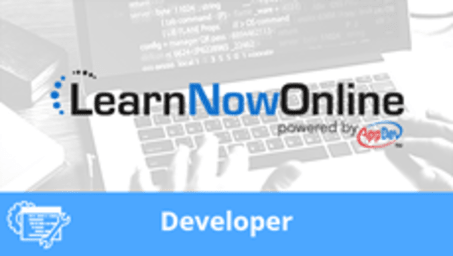
Object Oriented Programming, Part 1 of 3
Course description
Object Oriented Programming will help you improve your programming skill set by giving you a thorough understanding of OOP regardless of your programming background. The training uses a non-jargon approach to teaching the backbone concepts of OOP which have been field tested in years of university-level teaching. While Visual Studio and C# form the instruction environment, the course is language agnostic as possible so the concepts are easily applied to other popular OOP languages and platforms.
Each LearnNowOnline training course is made up of Modules (typically an hour in length). Within each module there are Topics (typically 15-30 minutes each) and Subtopics (typically 2-5 minutes each). There is a Post Exam for each Module that must be passed with a score of 70% or higher to successfully and fully complete the course.
Prerequisites
This is course is intended for programmers who are interested in understanding object-oriented principles. The student should be familiar with using an Integrated Development Environment such as Visual Studio or Eclipse.
Meet the expert
Jack Purdum
Dr. Jack Purdum recently retired from Purdue University's College of Technology. Dr. Purdum has won several teaching awards and has over 25 years of university teaching experience. He has published numerous journal and magazine articles, was a frequent contributor to various software development conferences, owned and managed his own software house specializing in language compilers and programming tools for 17 years, and holds a U.S. patent for imaging software he developed. Dr. Purdum is also the author of 16 programming texts including the New York Times Best Seller "The C Programming Guide."
Video Runtime
147 Minutes
Time to complete
187 Minutes
Course Outline
Module 1
History of Programming (18:28)
- Introduction (01:11)
- Binary Languages (01:30)
- Assembly Language (01:28)
- High Level Languages (02:11)
- Structured Programming (05:41)
- Object Oriented Programming (03:07)
- Why Use OOP (02:54)
- Summary (00:22)
More History of Programming (23:21)
- Introduction (00:39)
- Objects Overview (00:52)
- Example of an Object (07:03)
- Object Methods (02:48)
- Object Properties (03:43)
- Class (05:00)
- Class Versus Object (02:58)
- Summary (00:15)
Define Versus Declare (13:59)
- Introduction (00:51)
- Defining a Variable (05:35)
- Bucket Analogy (07:17)
- Summary (00:15)
Designing Your Own Classes (14:28)
- Introduction (00:53)
- Overview (02:14)
- Class Design Goals (05:39)
- Designing Your Program (05:10)
- Summary (00:31)
Module 2
UML Light (26:28)
- Introduction (00:42)
- UML Light Overview (07:10)
- Access Specifiers (02:16)
- Defining a Class Object (04:41)
- Demo: UML Light (11:18)
- Summary (00:17)
More UML Light (28:38)
- Introduction (00:37)
- Demo: UML Light Continued (02:30)
- Demo: Visual Interface (06:27)
- Demo: Add Another Component (03:14)
- Demo: Class Code (01:20)
- Demo: Add a Property List (07:50)
- Demo: Add a Constructor (02:03)
- Demo: Multiple Constructors (04:15)
- Summary (00:16)
UML Light Finished (21:58)
- Introduction (00:38)
- Demo: Constructors Continued (03:45)
- Demo: Overridden Constructor (08:37)
- Demo: Write a Property Method (08:20)
- Summary (00:37)







